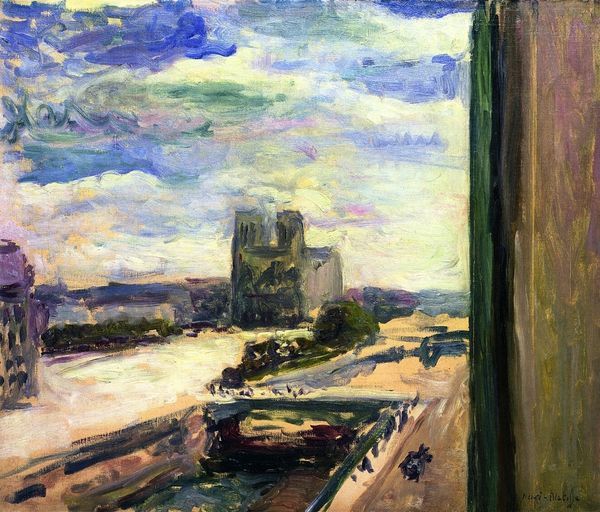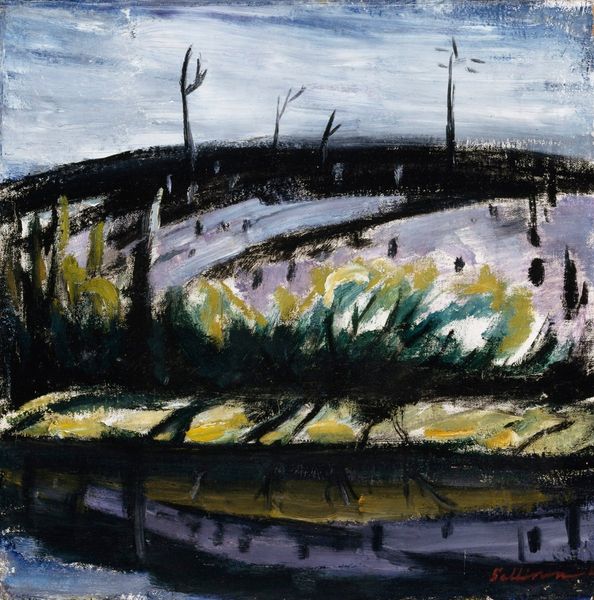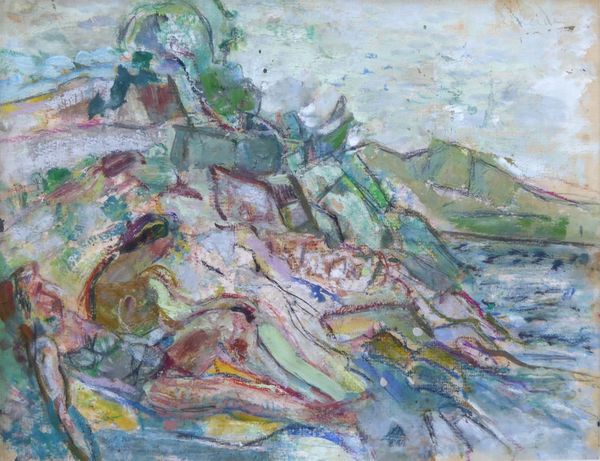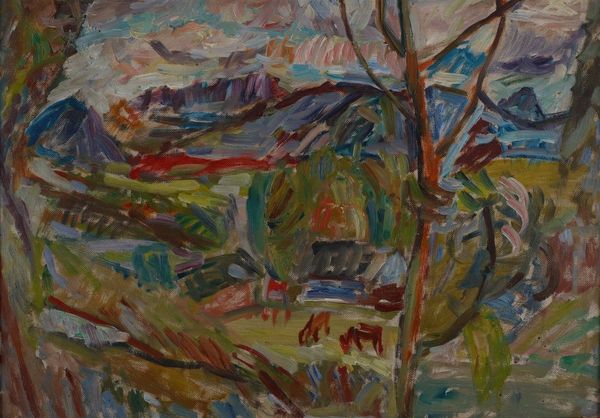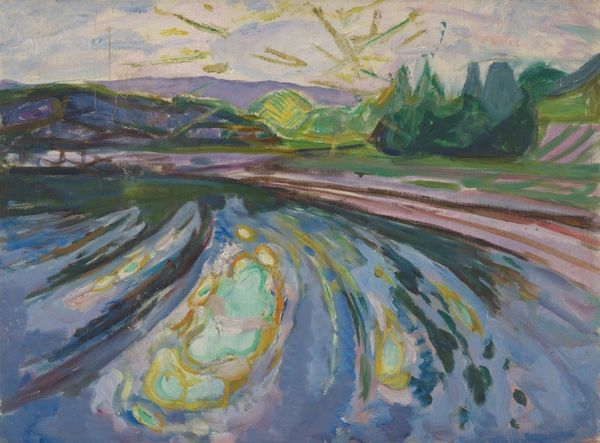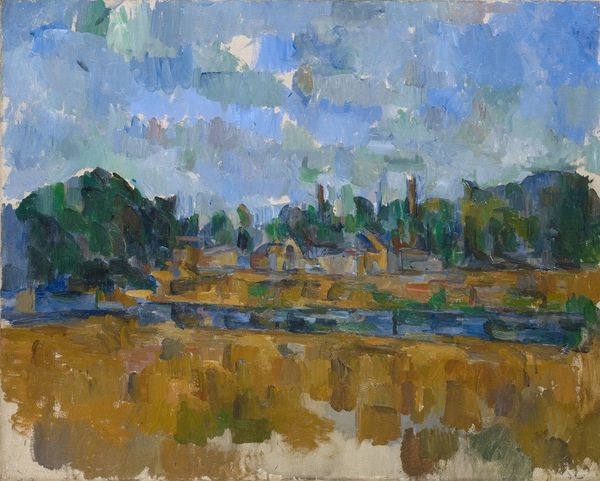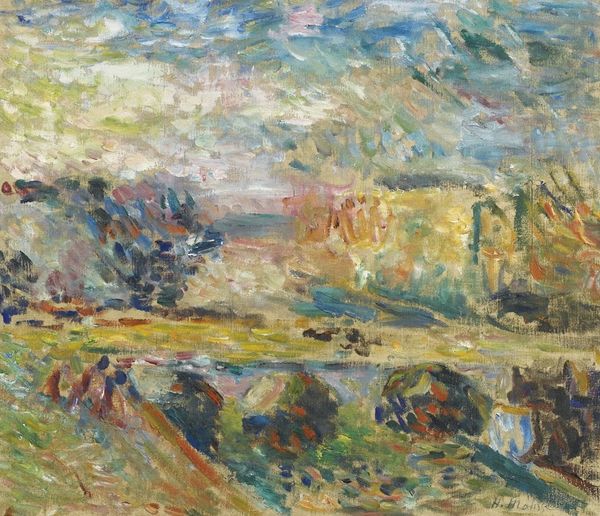
Dimensions: support: 711 x 921 mm frame: 917 x 1118 x 100 mm
Copyright: © Tate | CC-BY-NC-ND 4.0 DEED, Photo: Tate
Curator: This is "The Mississippi at Minneapolis" by Martin Bloch, though the date of its creation isn't known. Bloch, born in 1883, brings a European sensibility to an American industrial landscape. Editor: Immediately, the clashing of vibrant blues and oranges feels like a post-industrial reckoning—beauty battling the harshness of urban development. Curator: Indeed. Bloch was part of an expressionist movement reacting against industrialization. One can consider how the painting captures a moment where nature and industry collide. Editor: And the river, usually a symbol of life, is almost overwhelmed, a reflection perhaps on capitalist excesses and their environmental impacts. Curator: Bloch's own history as a Jewish artist fleeing Nazi Germany certainly colours how we read the painting’s themes of displacement and finding new landscapes. Editor: Absolutely. It's a landscape imbued with complex layers of personal and political history, making it more than just a pretty picture. Curator: Precisely, it highlights the artist's own displacement and adaptation to a new world. Editor: A potent reminder that landscapes are never neutral, and their representation is deeply intertwined with history and identity.
Comments
tate 7 months ago
⋮
http://www.tate.org.uk/art/artworks/bloch-the-mississippi-at-minneapolis-n06235
Join the conversation
Join millions of artists and users on Artera today and experience the ultimate creative platform.
tate 7 months ago
⋮
In 1948 Bloch visited America, where he found in the western and southern states a light and a climate similar to the Mediterranean. For a brief period he taught at the Walker Art Centre in Minneapolis. The high-keyed colour in this work, in particular the juxtaposition of blue and orange, reflects Bloch's aim to use colour to represent the light and space of nature. In 'Thoughts on Art Education' Bloch wrote, 'The optical colours observed in nature [the pupil] has to translate into the language of pigments. The beginner must recognise the importance of that beauty which is the outcome of understanding and loving the artist's craft'. Gallery label, October 1995


